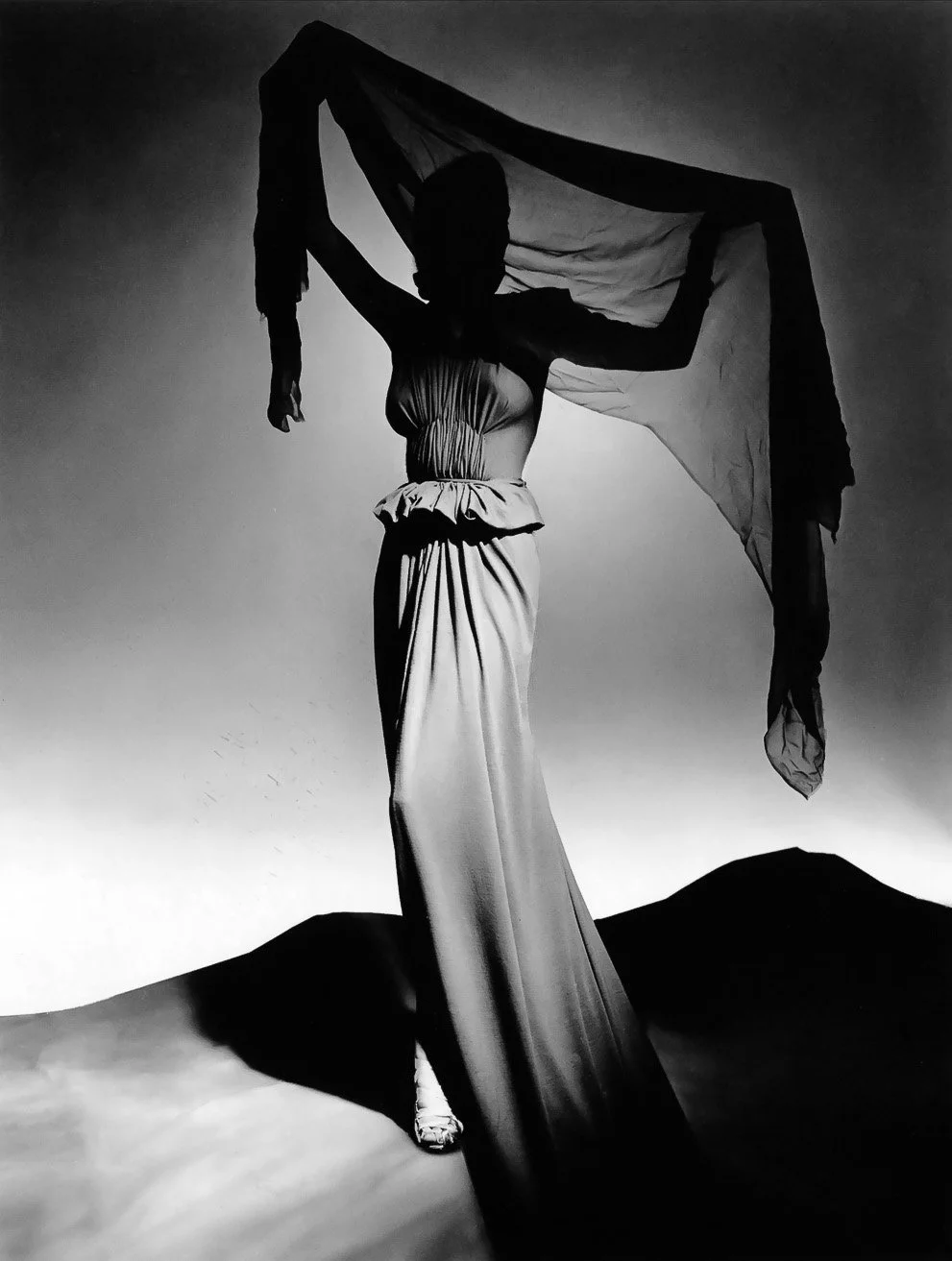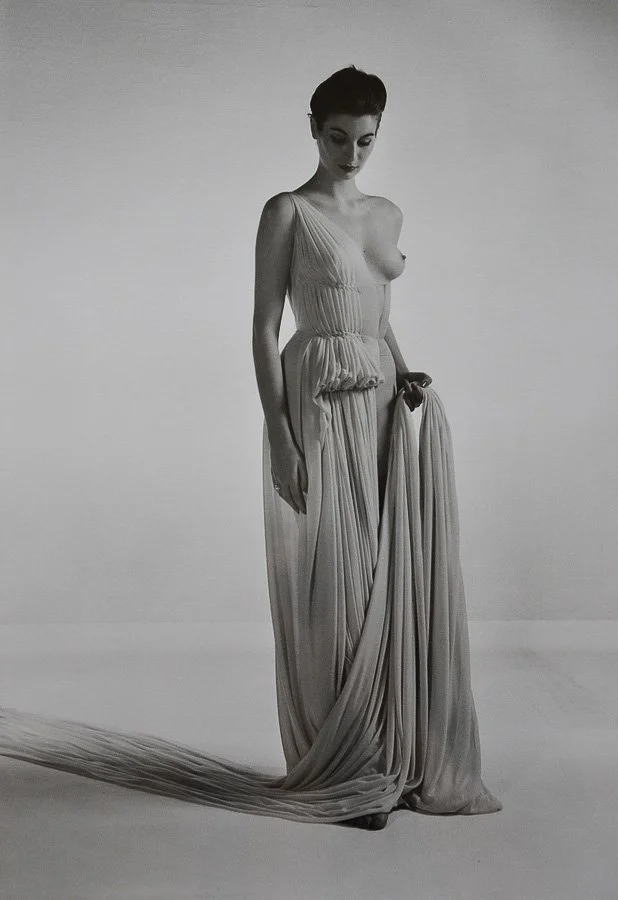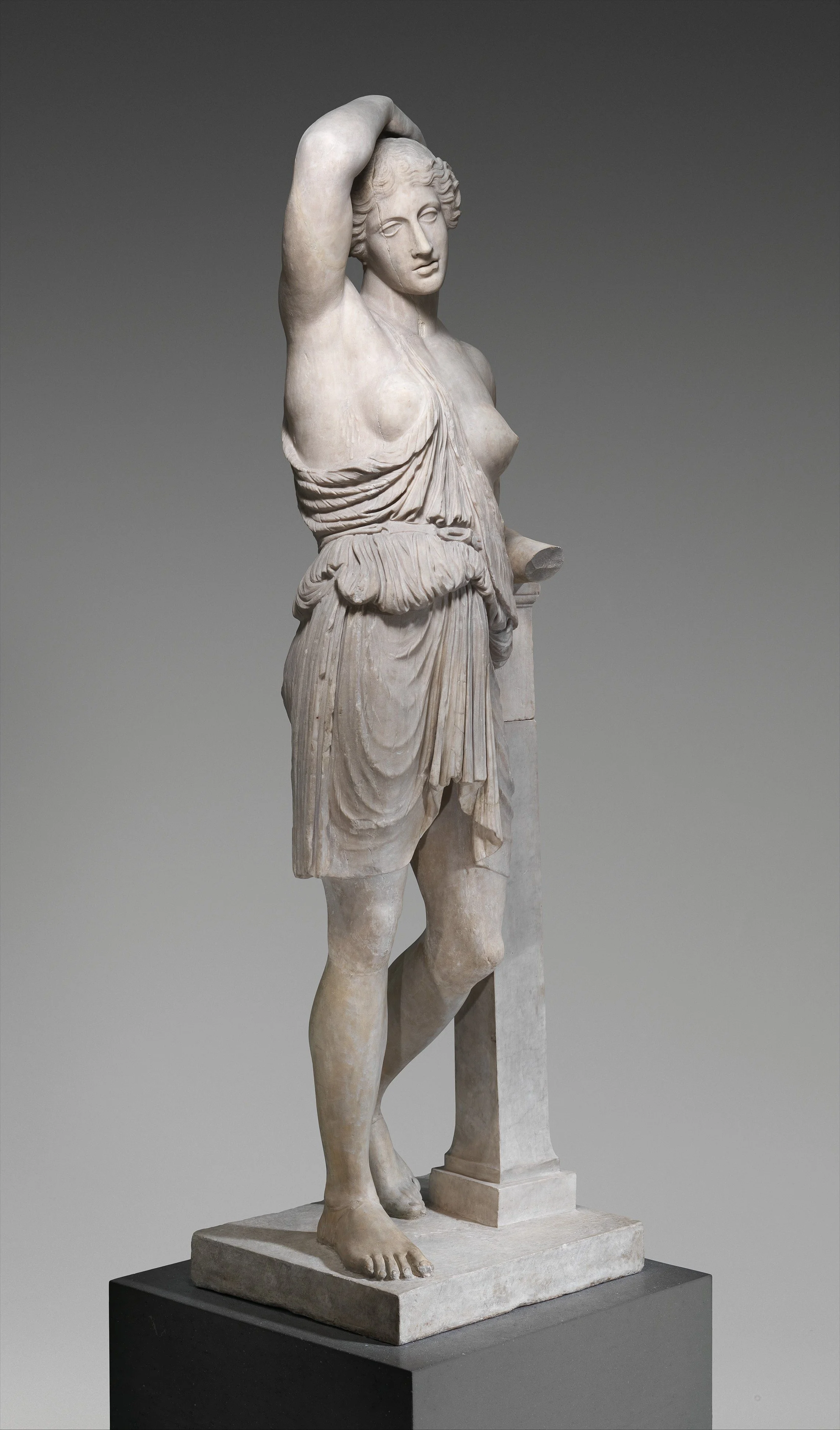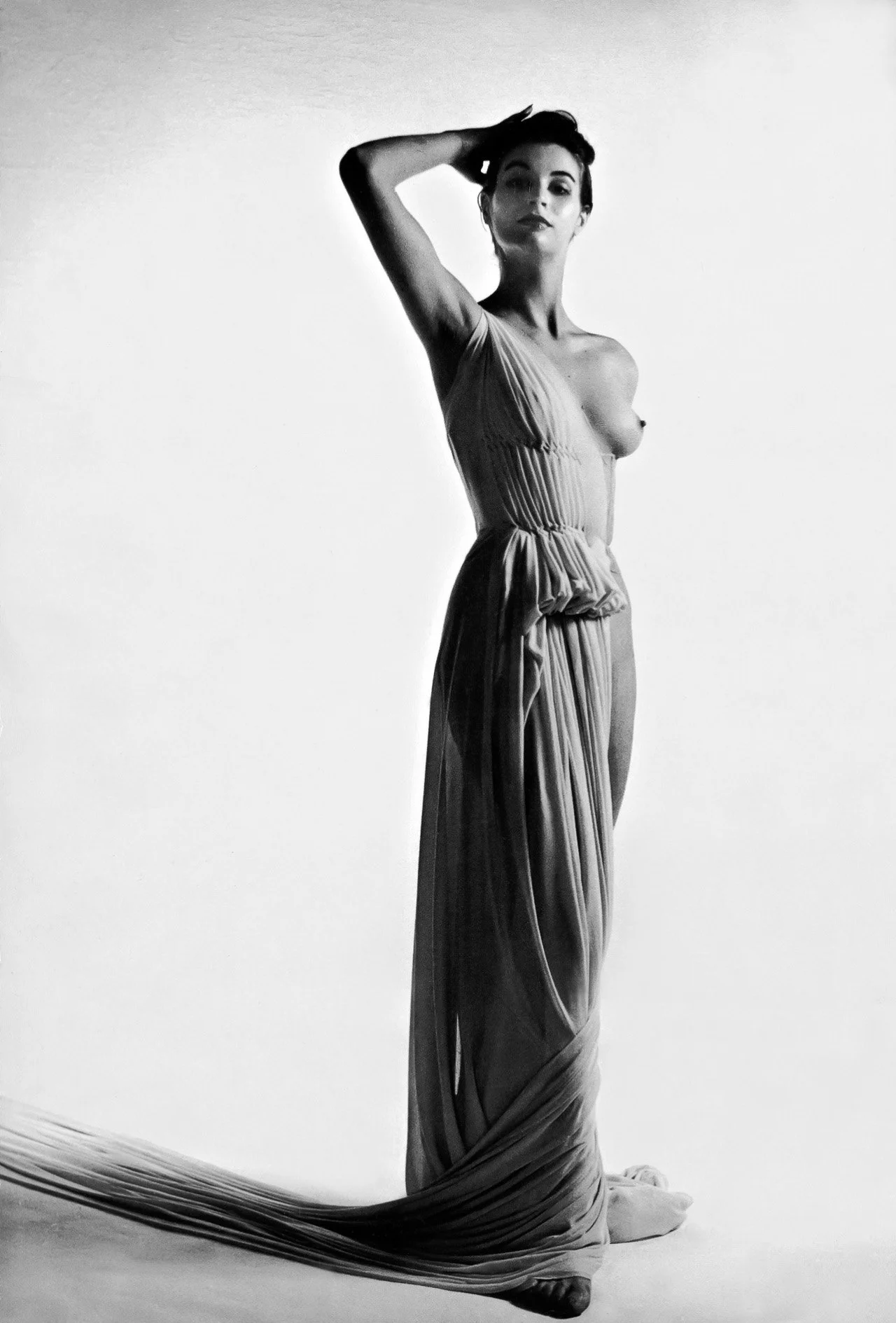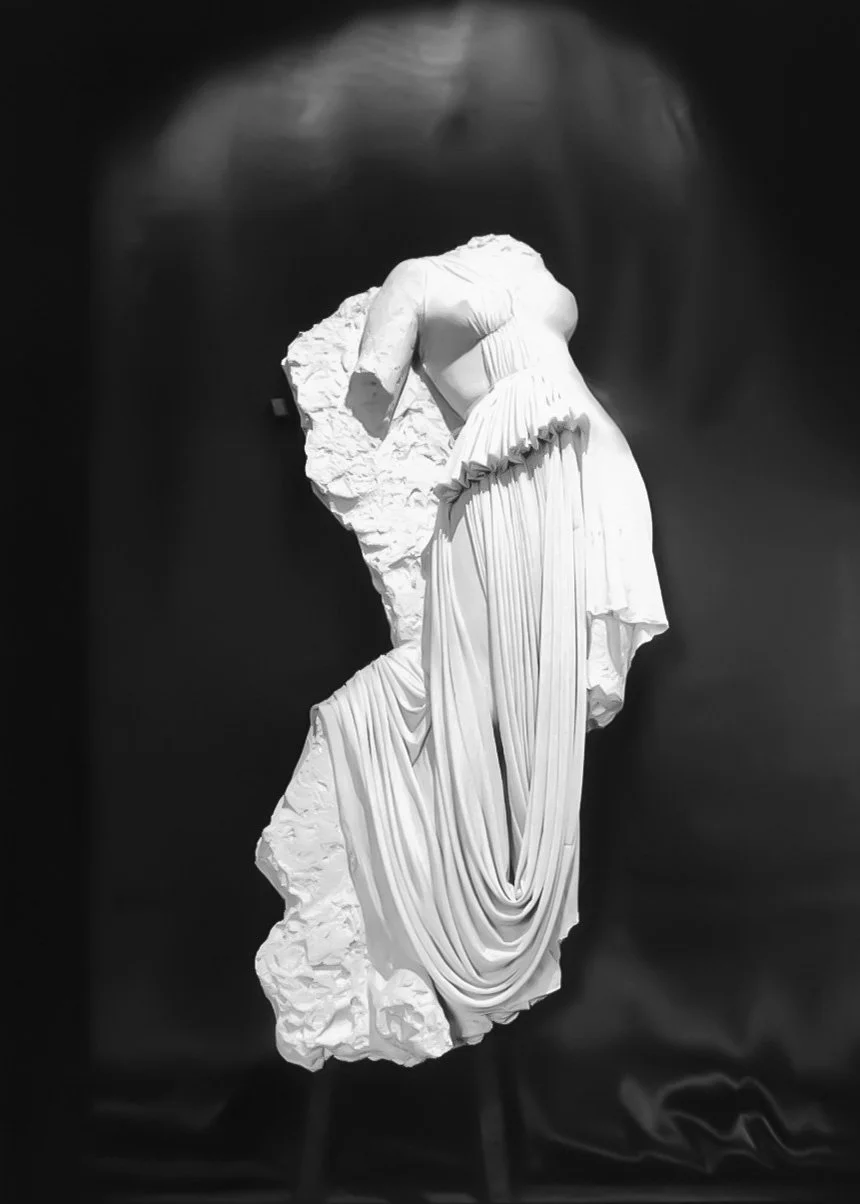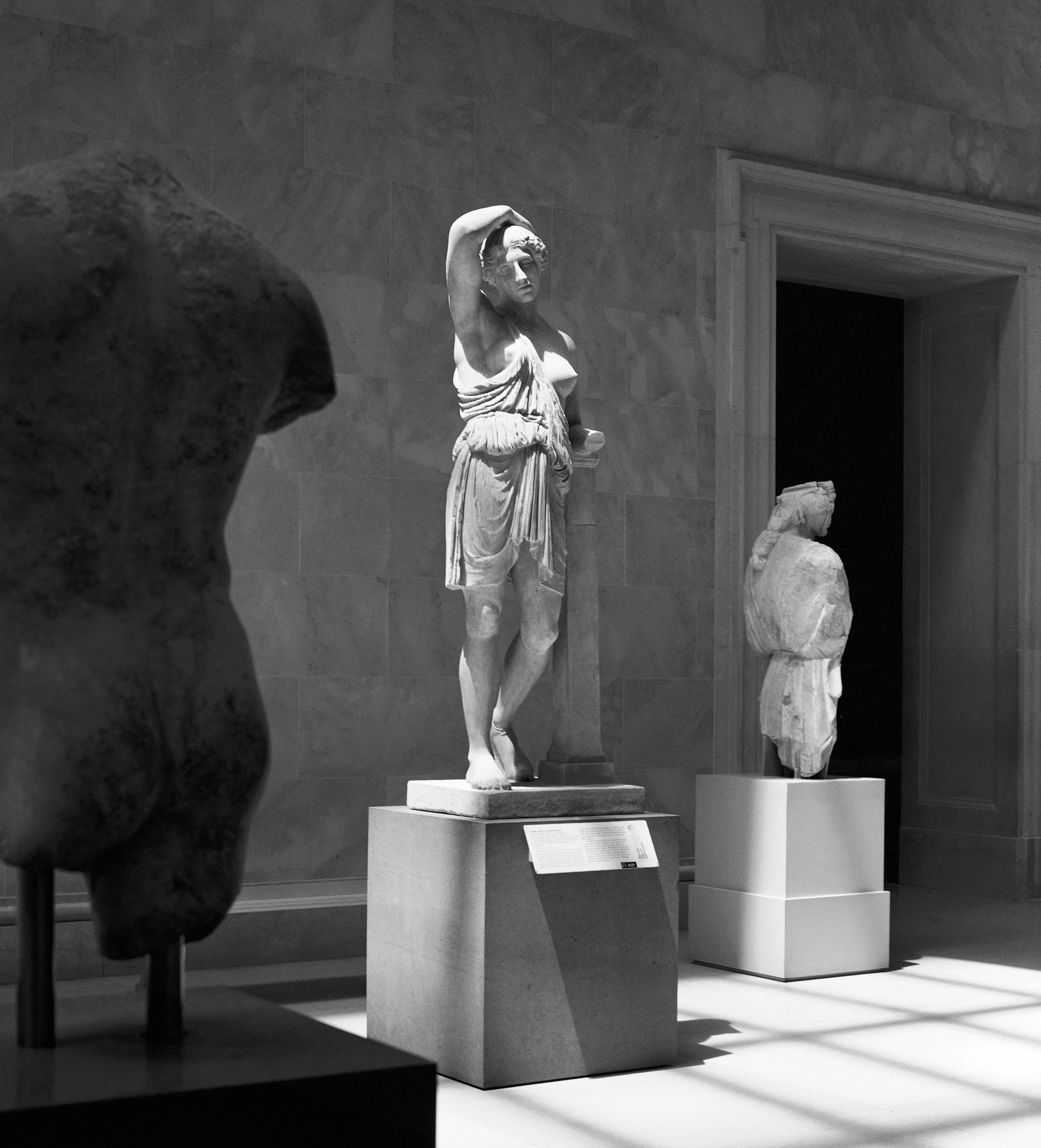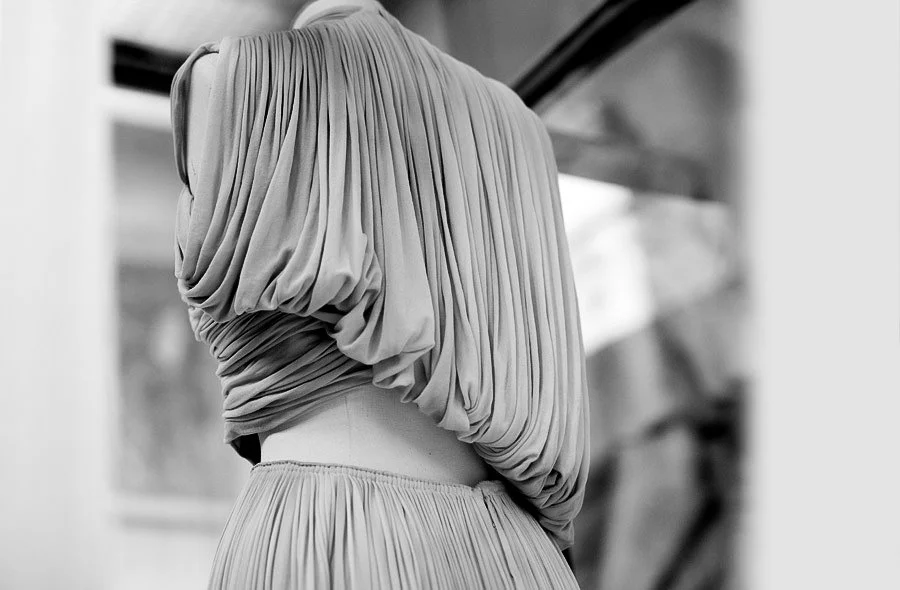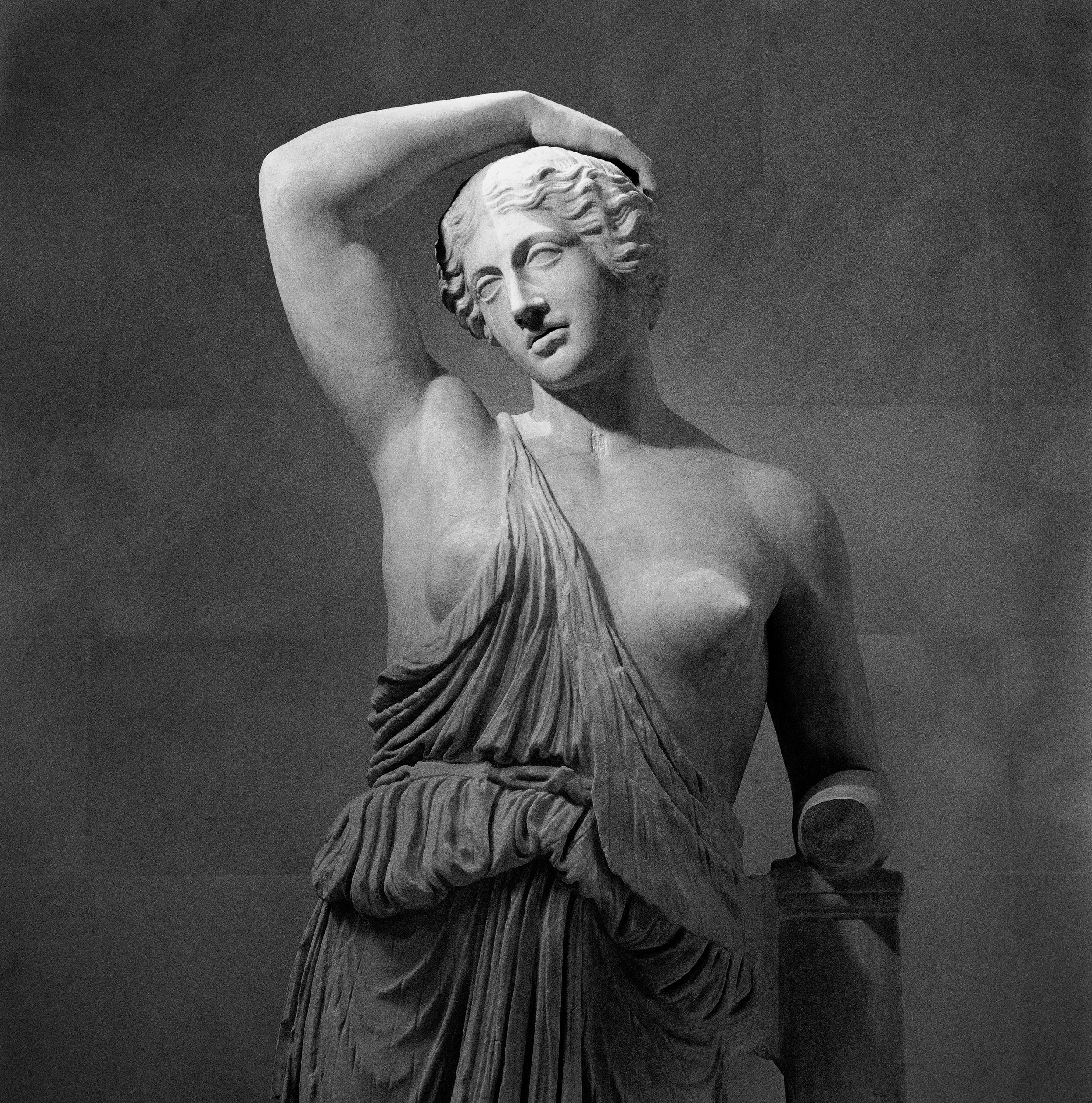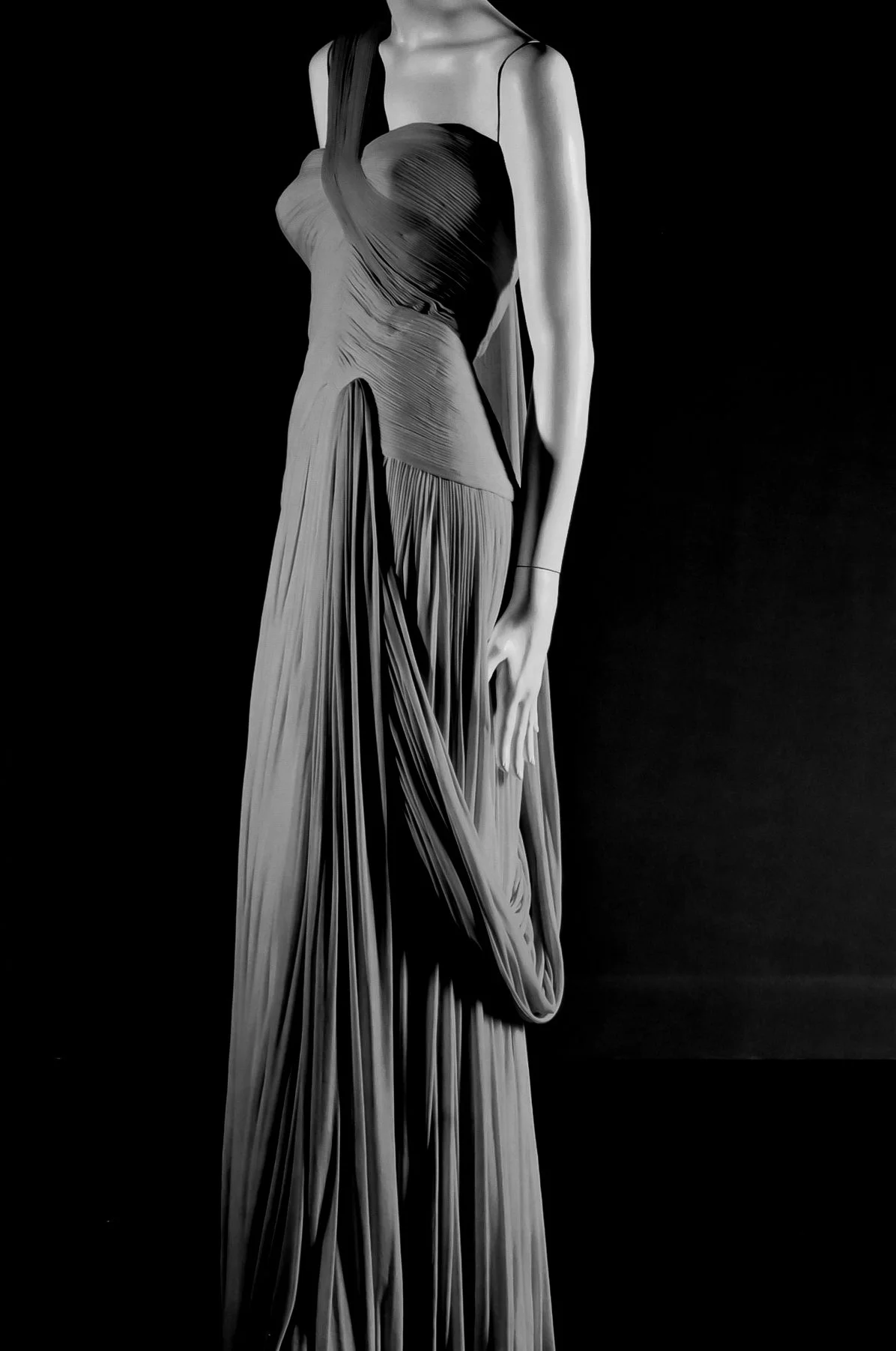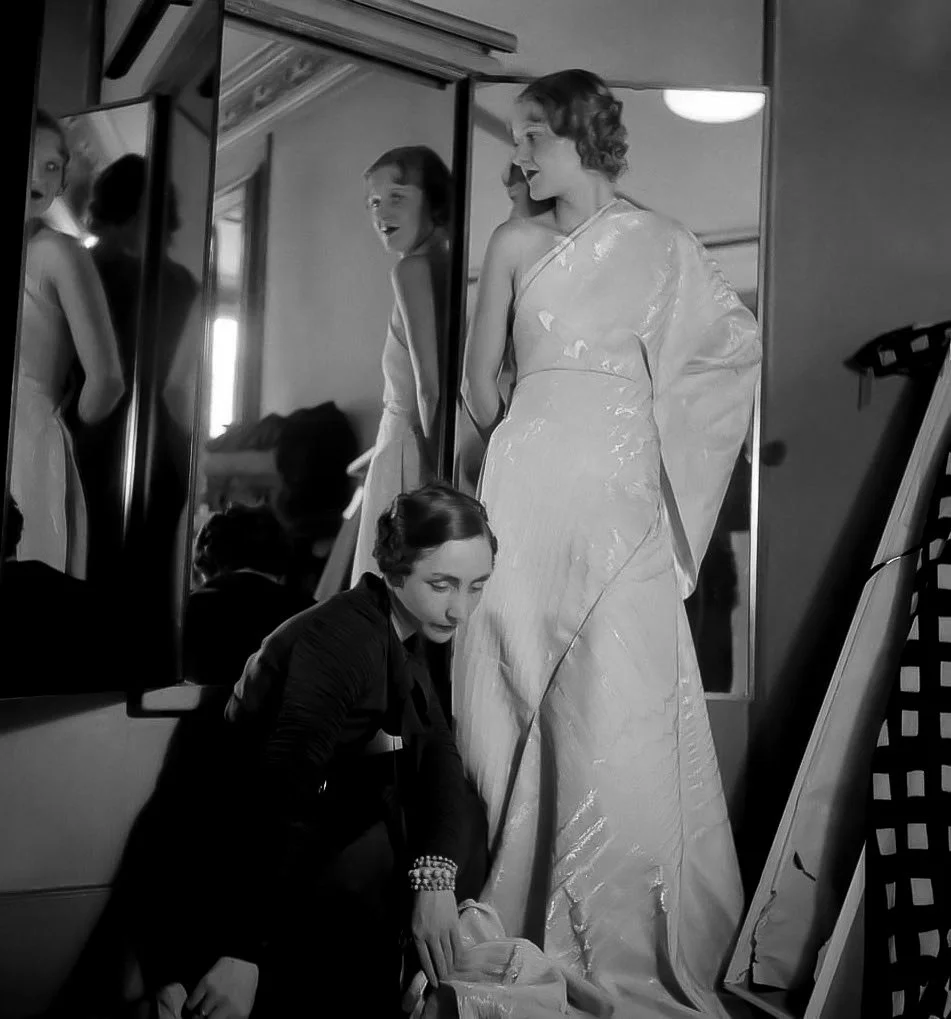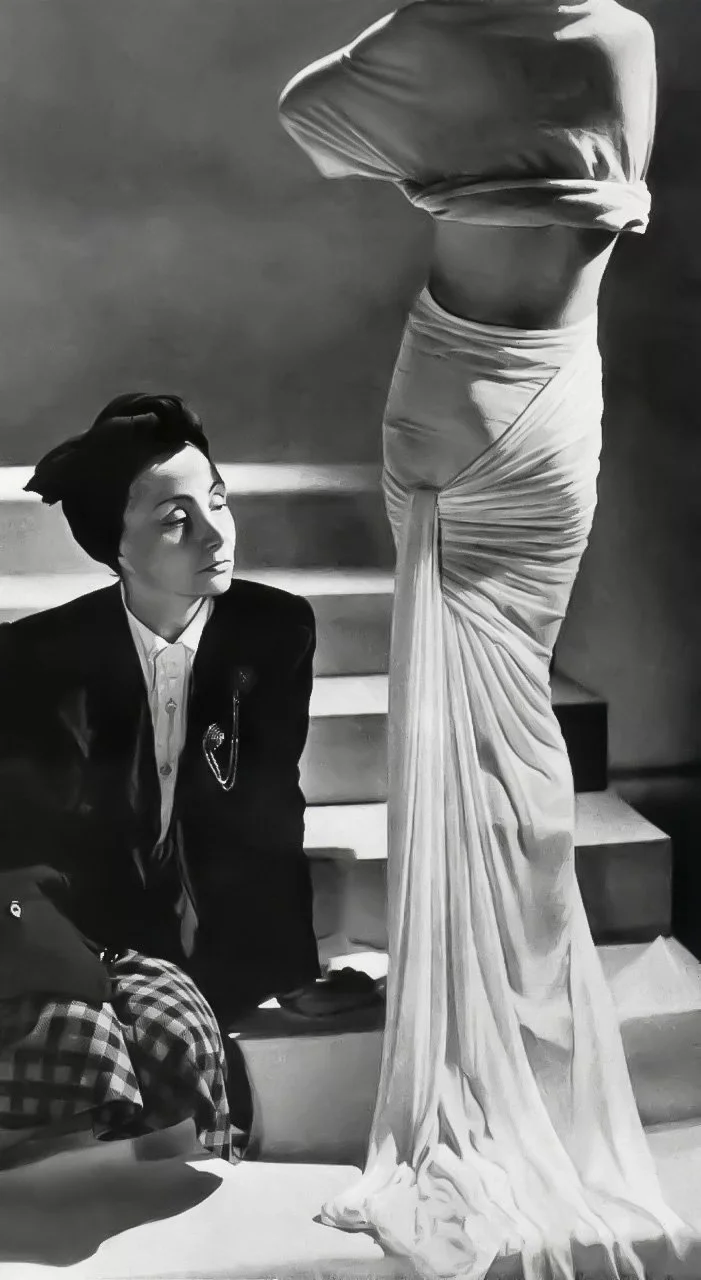GRÉS IS FOR GRECIAN
Model wearing a gown by Madame Grès for Lord and Taylor • 1940 • George Platt Lynes • The Metropolitan Museum of Art, New York City
How Madame Grès, once dubbed the Sphinx of Fashion, substituted stone for fabric in her sartorial adaptation of ancient Greek art and architecture. As she famously said throughout her life: “I wanted to be a sculptor. For me, working with cloth or stone is the same thing.” And so, it is no surprise that the marble chiton donned by the 1st Century wounded Amazon now living at The Met, looks as though it was draped in the studio by none other than Grès, herself.
Marble Statue of a Wounded Amazon • 1st – 2nd Century A.D. • Roman • The Metropolitan Museum of Art, New York City
“Harper’s Bazaar proclaimed in 1936 that, 'Alix stands for the body rampant, for the rounded feminine sculptural form beneath the dress.’ She had been trained as a sculptress and it was her feeling for Classical Greek sculpture that enabled her to capture its timeless elegance in her evening gowns. Hers was an individualistic, uncompromising style where the sculptural cut of her gowns had the liquid effect of the 'wet’ drapery of Classical Greek sculpture that turned fashionable women into living statues.” • Phaidon Editors, 1998
Rough Design of a Dress by Alix • 1939 • Willy Maywald
“Classicism in art is most simply defined as an approach to the medium founded on the imitations of Antiquity, and on the assumptions of a set of values attributed to the ancients.”
Marble Statue of a Wounded Amazon • 1st – 2nd Century A.D. • Roman • The Metropolitan Museum of Art, New York City
“In Greek art, the Amazons, a mythical race of warrior women from Asia Minor, were often depicted battling such heroes as Herakles, Achilles, and Theseus. This statue represents a refugee from battle who has lost her weapons and bleeds from a wound under her right breast. Her chiton is unfastened at one shoulder and belted at the waist with a makeshift bit of bridle from her horse. Despite her plight, her face shows no sign of pain or fatigue. She leans lightly on a pillar at her left and rests her right arm gracefully on her head in a gesture often used to denote sleep or death. Such emotional restraint was characteristic of classical art of the second half of the fifth century B.C.” • The Metropolitan Museum of Art
Rough Design of a Dress by Alix • 1939 • Willy Maywald • Image courtesy of Madame Grès : Sphinx of Fashion by Patricia Mears in association with The Museum at the Fashion Institute of Technology, New York City
Plaster female figure draped in silk jersey made for the New York World’s Fair • April 1939 • Boris Lipnitzki • Image courtesy of Madame Grès : Sculptural Fashion by Olivier Saillard in association with the 2013 exhibition at the MoMu Fashion Museum, Antwerp
Detail of the Marble Statue of a Wounded Amazon • 1st – 2nd Century A.D. • Roman • The Metropolitan Museum of Art, New York City
Grecian Silk Jersey Evening Dress • Circa 1945 • Private Collection of Hamish Bowles • Image courtesy of Irving Solero via Madame Grès : Sphinx of Fashion by Patricia Mears in association with The Museum at the Fashion Institute of Technology, New York City
Marble Statue of a Wounded Amazon • 1st – 2nd Century A.D. • Roman • The Metropolitan Museum of Art, New York City
Miss Koopman modeling a gown by Madame Grès • 1934 • Paris • George Hoyningen-Huené • The Museum of Fine Arts, Houston
Grecian Silk Jersey Evening Dress • Circa 1950 - 51 • Permanent Collection of The Museum at FIT • Image courtesy of Irving Solero via Madame Grès : Sphinx of Fashion by Patricia Mears in association with The Museum at the Fashion Institute of Technology, New York City
Marble Statue of a Wounded Amazon • 1st – 2nd Century A.D. • Roman • The Metropolitan Museum of Art, New York City
Detail of a gown displayed at the Madame Grès : La Couture à l'Oeuvre exhibition at the Musée Bourdelle in partnership with the Palais Galliera • 2011 • Musée Bourdelle, Paris
Marble Statue of a Wounded Amazon • 1st – 2nd Century A.D. • Roman • The Metropolitan Museum of Art, New York City
Grecian Silk Jersey Evening Dress • Circa 1950 - 51 • Permanent Collection of The Museum at FIT • Image courtesy of Irving Solero via Madame Grès : Sphinx of Fashion by Patricia Mears in association with The Museum at the Fashion Institute of Technology, New York City
Dress by Madame Grès with Boucheron Jewelry • September 15, 1937 • Vogue • Horst P. Horst
Madame Grès : La Couture à l'Oeuvre Exhibition • 2011 • Musée Bourdelle, Paris • Image courtesy of Madame Grès : Sculptural Fashion by Olivier Saillard in association with the 2013 exhibition at the MoMu Fashion Museum, Antwerp
Madame Grès creating an evening gown for Macy’s • August 1933 • Paris • Boris Lipnitzki
Gowns displayed at the Madame Grès : La Couture à l'Oeuvre exhibition at the Musée Bourdelle in partnership with the Palais Galliera • 2011 • Musée Bourdelle, Paris
Model wearing a gown by Madame Grès • Circa 1937 • Femina • Eugène Rubin
Detail of the Marble Statue of a Wounded Amazon • 1st – 2nd Century A.D. • Roman • The Metropolitan Museum of Art, New York City
Madame Grès posing next to her model • 1946 • Eugène Rubin

